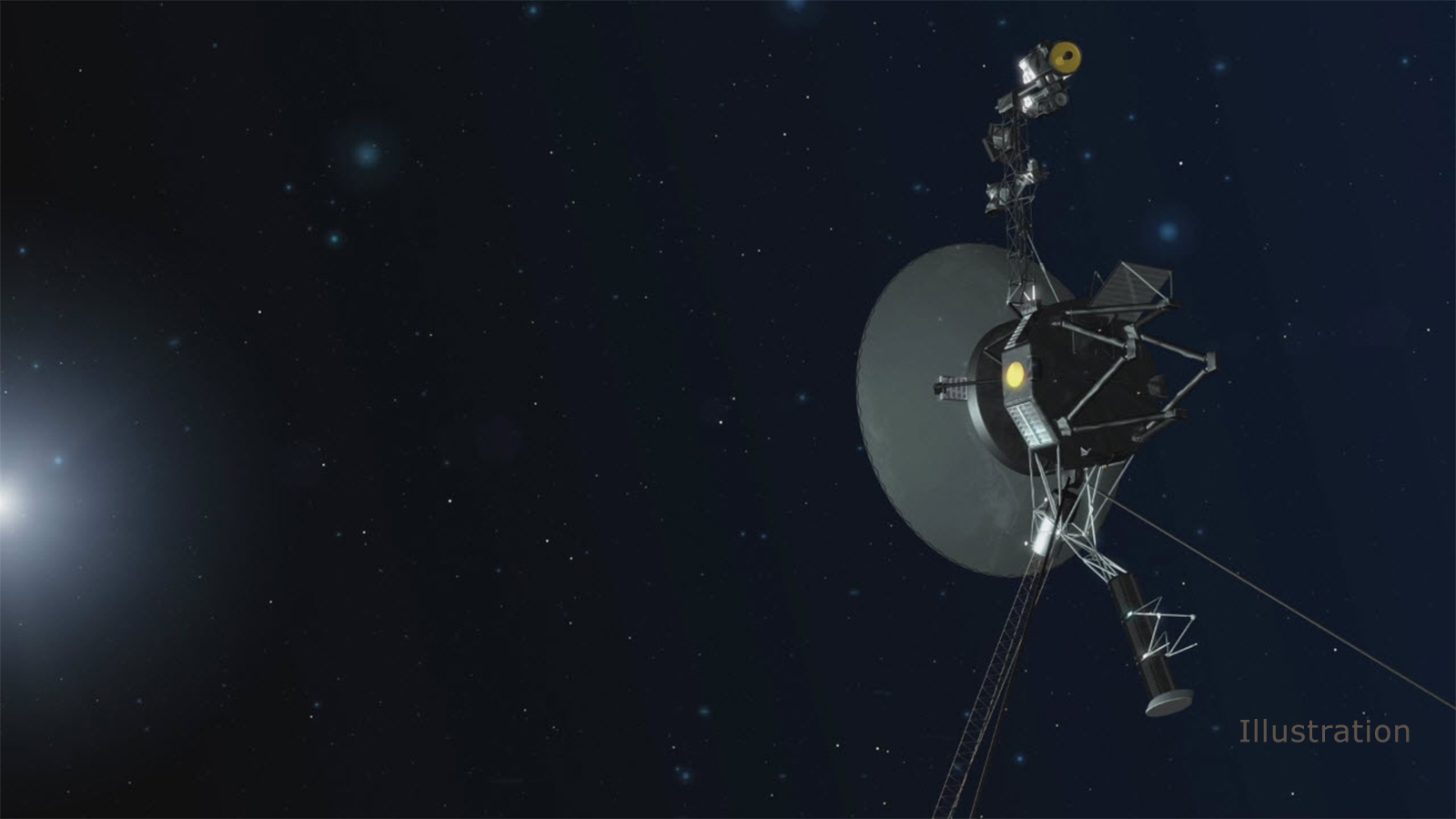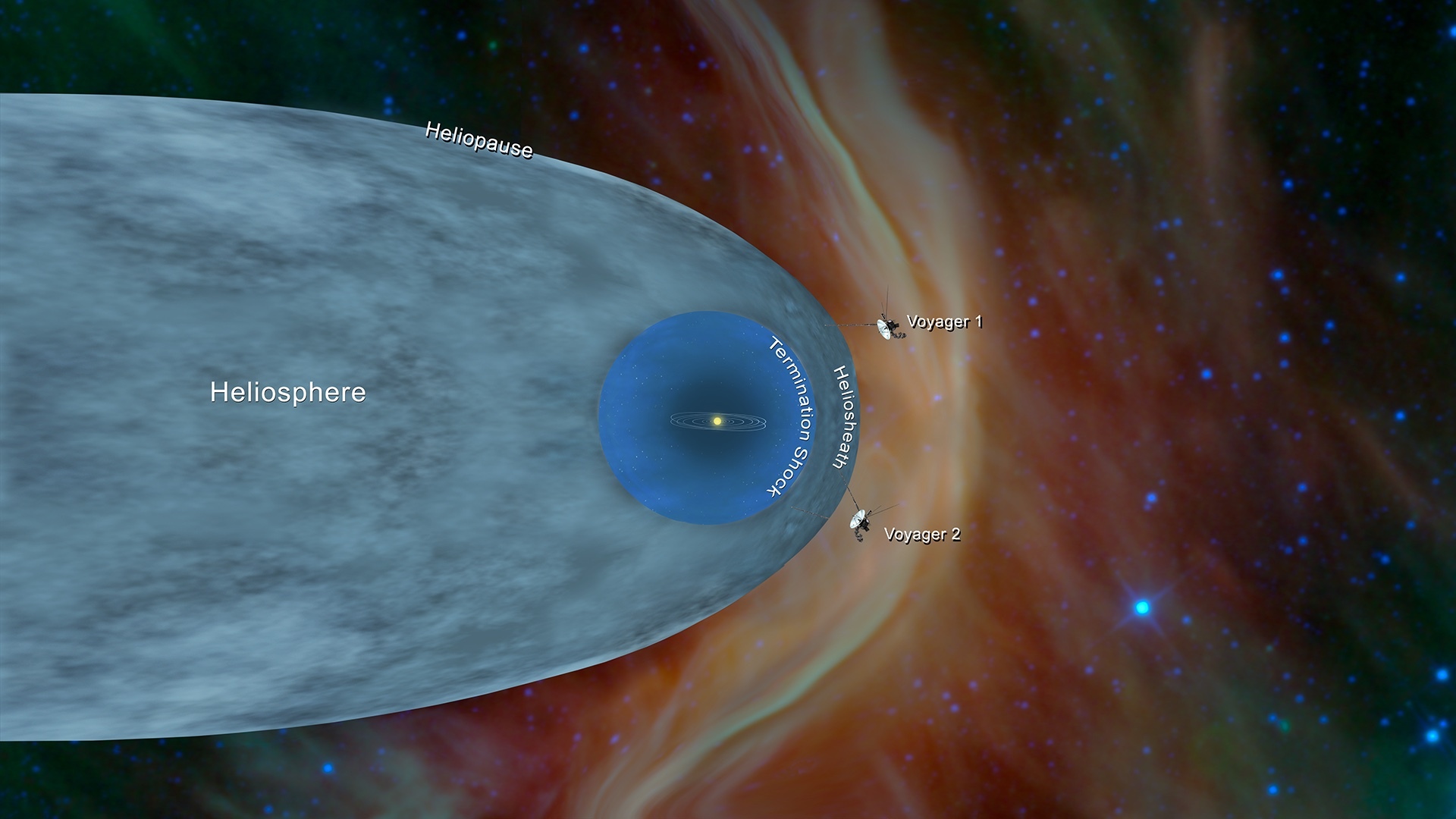NASA's Voyager and Pioneer Probes Launched Decades Ago and Are Still Out There. Here's Where They'll End Up.
Scientists have shown which stars these craft will pass by millions of years after the vehicles stop working.

Spacecraft that launched from Earth in the 1970s are still traveling on trajectories that led them out of our solar system and beyond. In a new study, scientists have predicted the future of these spacecraft, determining which stars the vehicles will pass, and how close they will get to these stars, within the next few million years.
On March 2, 1972, NASA launched its Pioneer 10 spacecraft, which would become the first craft to travel through the asteroid belt. About a year later, Pioneer 11 took flight. And in 1977, NASA's Voyager 2 spacecraft launched, with Voyager 1 following behind a few weeks later. These spacecraft, in addition to NASA's New Horizons probe, are the only spacecraft ever launched that are capable of reaching interstellar space. So far, Voyager 1 and Voyager 2 have broken through that barrier. However, if they continue on, Pioneer 10, Pioneer 11 and NASA's New Horizons craft are all expected to leave the sun's sphere of influence, called the heliosphere, and continue exploring through the interstellar medium.
Eventually, these spacecraft will run out of power and "die"; their science equipment will stop working, and they will stop communicating. In fact, Pioneer 10 and Pioneer 11 sent their last transmissions in 2003 and 1995, respectively. Though these craft can no longer transmit signals to Earth, researchers have figured out which stars the vehicles will pass long after they cease to be operational.
Related: How the Voyager Space Probes Work (Infographic)
Tricky math
These calculations are tricky, because as these spacecraft travel away from Earth, the cosmos around them move, too. Coryn A. L. Bailer-Jones, of the Max Planck Institute for Astronomy in Germany, and Davide Farnocchia, of the Center for Near Earth Object Studies at NASA's Jet Propulsion Laboratory in California, have found the spacecraft's destinations by using the 3D positions and 3D velocities of 7.2 million stars that were included in the second data release from the Gaia space observatory's survey of over 1 billion stars.
In the new study, Bailer-Jones and Farnocchia calculated that the next star that Voyager 1 will pass will be Earth's nearest stellar neighbor, Proxima Centauri, in 16,700 years. However, this encounter will be unremarkable, as the craft's closest approach will be 1.1 parsecs (pc) from the star, which equates to 3.59 light-years — very, very far away. In fact, Voyager 1 is currently 1.3 pc (4.24 light-years) from the star, so this encounter won't be much closer than the craft's current location is. (Earth's sun is 1.29 pc, or 4.24 light-years, away from Proxima Centauri.)
Next stop, Proxima Centauri

Voyager 2 and Pioneer 11's next close encounters will also be with Proxima Centauri, while Pioneer 10's next flyby will be with the star Ross 248, a small star 10.3 light-years from Earth in the constellation Andromeda.
Get the Space.com Newsletter
Breaking space news, the latest updates on rocket launches, skywatching events and more!
These distant encounters might not generate excitement. But Bailer-Jones and Farnocchia predicted other future flybys in which the spacecraft will get remarkably close to stars outside our solar system. For example, Voyager 1 will get very close to the star TYC 3135-52-1, a star located about 46.9 light-years from our sun, in 302,700 years. The craft will pass within 0.30 pc, just under a light-year — so close that the spacecraft might penetrate the star's Oort cloud, which is a shell of cosmic objects that surround a star past its planets, if it has one, Bailer-Jones told Space.com in an email.
Additionally, the researchers found that Voyager 1 will swing close, within 0.39 pc (1.27 light-years), of Gaia DR2 2091429484365218432, a star that lies a whopping 159.5 pc (520.22 light-years) from the sun. To give you an idea of how close the approach is, we are 1.29 pc (4.24 light-years) away from Proxima Centauri. They predicted that the craft will pass close to this faraway star in 3.4 million years.
Bailer-Jones told Space.com that this research was inspired by the team's previous work to trace the possible origins and future destinations of the mysterious interstellar object dubbed 'Oumuamua.
"It was mostly a bit of fun," Bailer-Jones told Space.com. "But it also reminds us how long it takes to get to nearby stars at the kind of speeds these spacecraft have achieved (around 15 km/s relative to the sun).
"It also highlights that the closest encounters, because they can be tens or hundreds of thousands of years in the future, can be with stars which are not among the nearest stars to the sun right now," Bailer-Jones continued. "Also, if we want to explore the nearest stars within a human lifetime, we need to accelerate our spacecraft to much higher velocities."
The study was published April 5, 2019, in the journal IOPscience.
- What's Next for NASA's Voyager 2 in Interstellar Space?
- What Voyager 1 Learned at Jupiter Forty Years Ago
- Pioneer 10, the Pioneer Plaque & the Pioneer Anomaly
Follow Chelsea Gohd on Twitter @chelsea_gohd. Follow us on Twitter @Spacedotcom and on Facebook
Join our Space Forums to keep talking space on the latest missions, night sky and more! And if you have a news tip, correction or comment, let us know at: community@space.com.

Chelsea “Foxanne” Gohd joined Space.com in 2018 and is now a Senior Writer, writing about everything from climate change to planetary science and human spaceflight in both articles and on-camera in videos. With a degree in Public Health and biological sciences, Chelsea has written and worked for institutions including the American Museum of Natural History, Scientific American, Discover Magazine Blog, Astronomy Magazine and Live Science. When not writing, editing or filming something space-y, Chelsea "Foxanne" Gohd is writing music and performing as Foxanne, even launching a song to space in 2021 with Inspiration4. You can follow her on Twitter @chelsea_gohd and @foxannemusic.









